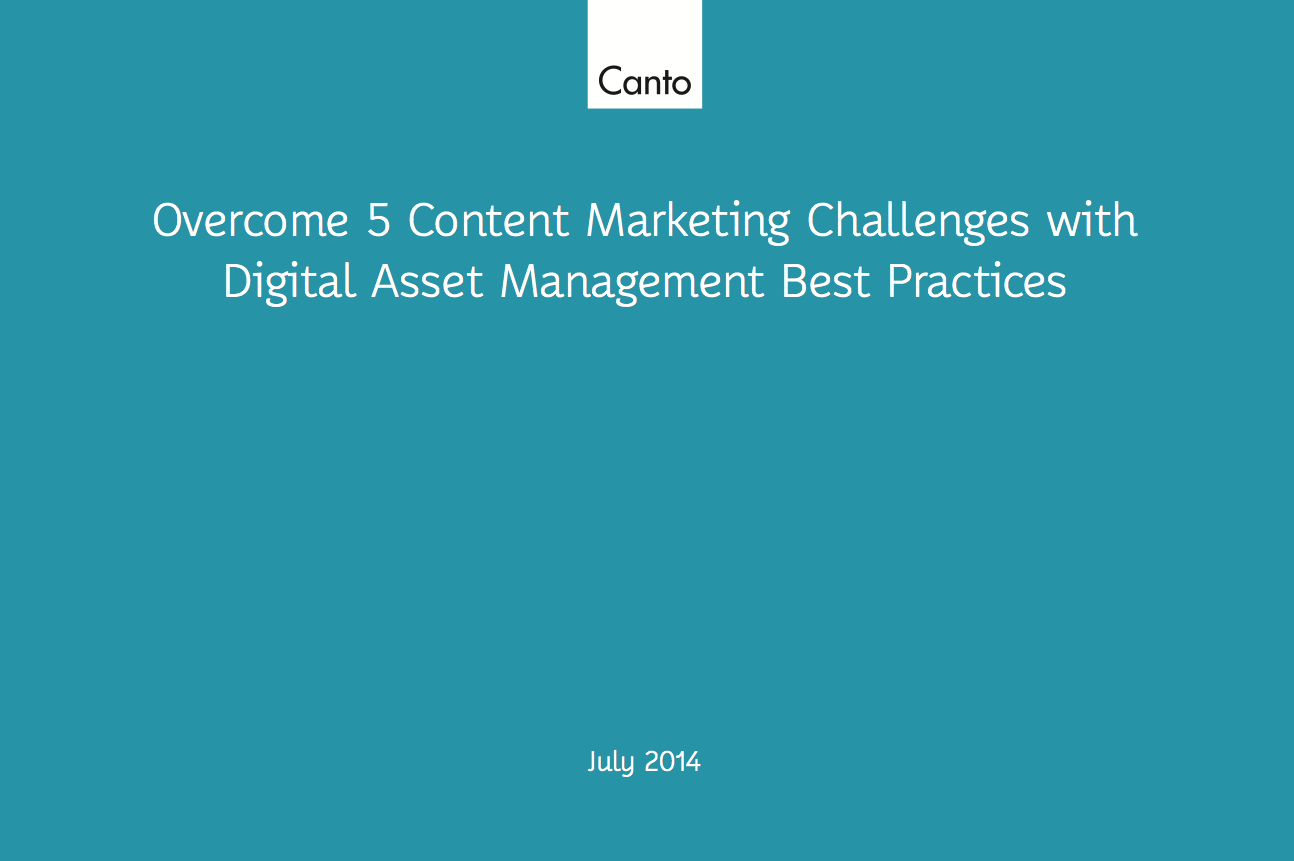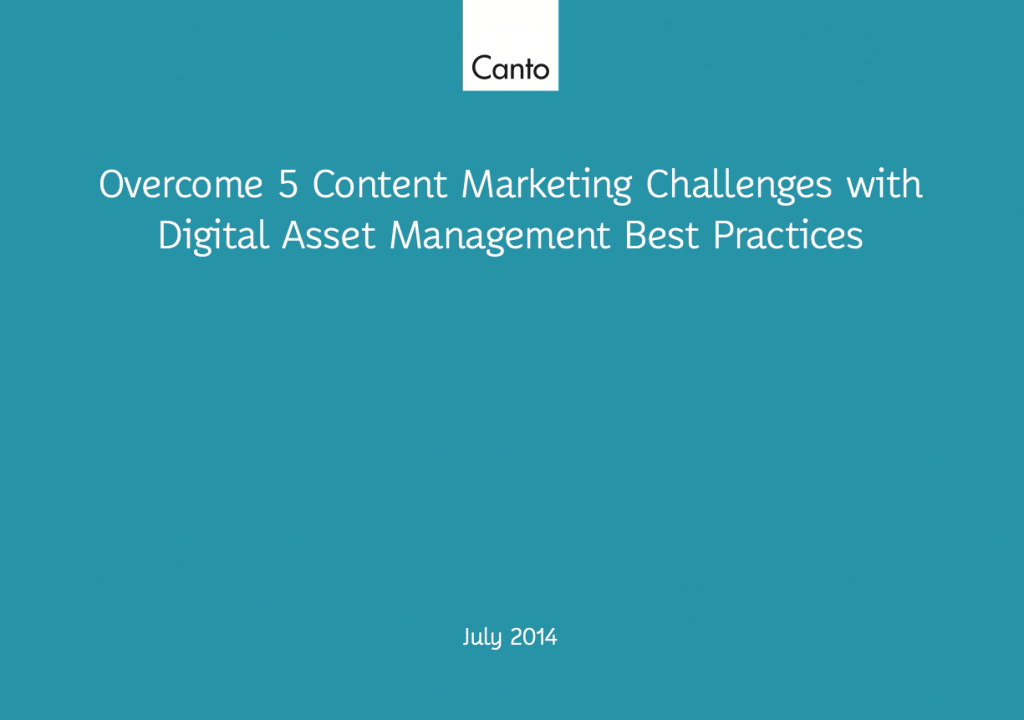
We talked with Leslie Weller, Director of Marketing at Canto, about these 5 challenges and how this new ebook that she co-authored showcases a solution to these problems. We discuss her career, whether individuals struggle more with logistics or mindsets, and what the future of digital asset management might look like.
Tell us about your career in digital asset management. Is your background DAM-related?
It actually isn’t. I’ve been in marketing for over 12 years, but before I joined Canto a year ago I had really never been introduced to digital asset management. However, I did feel that pain of having files disappear from a shared drive, experienced designers being the only people who knew where anything was and had struggled with not knowing what version to use. So I may not have been working in DAM, but I was certainly seeing and experiencing what it meant to work with and deal with digital assets in every sense.
It wasn’t until I started at Canto that I really learned about digital asset management formally, and before then I didn’t even know what was possible, and it was eye-opening. I kind of liken it to how I grew up vacationing. I grew up going on road trips and tent camping. We would pitch a tent in one town, sleep over that night and then move on to the next place and do it all over again. That’s what I thought it meant to “vacation”. Fast forward to my adult life and I realized you can go to all these different places and stay in a hotel, so there’s really no going back to a tent for me now that I know I can sleep comfortably in a bed as opposed to the cold ground.
It’s the same way with a business that’s never experienced having a DAM system or strategy in place. You get things done and get the work done, but once you have a solid DAM process you really can’t go back. We see that happen all the time, someone used DAM at their old company and now they just have to bring digital asset management to their new employer as well.
What's the most important thing for people to understand about DAM?
I think the answer is two fold, because it really depends on whom you’re talking to.
When it comes your everyday digital marketer or content marketing contributor, I think the most important thing is pure market education. It’s helping people understand that there is a better way to manage your digital content. We can now perform so many more automated processes than people ever thought possible.
For the archivists, librarians, consultants and anyone else who has experience with a DAM system or with a DAM strategy, the most important thing they need to realize is that getting full executive support is critical. Whether that’s someone who can champion a new project or expand a DAM system, having that support is absolutely essential.
Your new ebook, 5 Content Marketing Challenges, focuses on five specific challenges. Did you see individuals or organizations as a whole really struggling with these issues?
We’ve seen both. But they’re typically individuals within an organization that are really struggling with all of these challenges. My co-author of the ebook, Lucas Schnabel, and I pulled from real world customer problems that we consistently hear about. Every single one of the challenges that we mention stems from real world customer problems that we consistently hear about.
Take the first challenge, which is being able to maximize the value of your marketing materials. Consider a single product image that gets new packaging. You’ll need to make sure that new product image appears on the website, gets to your distribution partners, to your sales team and into the hands of your print team. Some organizations are tempted to host their ‘master record’ in their CMS, but then how would the print and social media teams get ahold of those files? They end up putting those important files in multiple places, so now they have duplicates. Eventually, they need to get those file to their agency or other 3rd party, which means different teams reference and send different files, and are never quite sure if they are working with the latest, most correct version.
With a DAM system, all of that chaos goes away. You build a central system which then talks to the other systems. It talks to Sharepoint, a project management system, the CMS…anywhere really. All of those systems can be pulling from a single point of truth.
A lot of it is about shifting a paradigm that continues to evolve for how we want to interact with our valuable digital content.
Do you think solutions to these sorts of problems are more about figuring out the right process, or about creating the right mindset/approach to those problems?
So much of it is about process improvement and process modeling, but let me go back to market education. Although you want to improve your process, if you don’t know as a business what your options are, you might be on a path that seems right and feels right, but might not be the right process for the long term.
And that goes back to that shifting paradigm I mentioned earlier. The right system can redefine the way you handle small and large tasks in a way that makes sense for multiple people and departments in an organization, but you need to be aware of what sort of parameters need to go into that redefinition. You also need to ensure you’re keeping an eye on how any changes will affect things in the long-run.
The process you define very much goes hand-in-hand with the way in which you’re approaching everything. Understanding they can affect one another is essential.
Given the pace of technology, what do you think the next generation of DAM looks like?
We have obviously seen innovation and have seen the speed of content creation and distribution workflows accelerate rapidly. Technology gets faster and faster, and organizations that are ready to take that on from an infrastructure and process perspective are going to have an incredible advantage.
One of the trends we might see is getting closer to a 360 degree view of your content. Think back to when CRM was gaining some legs. They really lobbied on this premise of gaining this 360 degree view of your customer. I think a similar mindset will come about with digital asset management, so that we’re moving toward this idea of having a 360 degree view of your content. Organizations will have a better view of what digital assets they own, how they’re being used, which ones are being interacted with and on which channels they’re being utilized to give them that holistic view.
I also think we’re going to see more and better DAM integrations across an organization. This could also lead to an evolution in terms of the ways digital assets are monetized in a direct way, so that the bottom line is also impacted in an active way when using the right DAM system.
To download Overcome 5 Content Marketing Challenges with Digital Asset Management Best Practices, click here.

